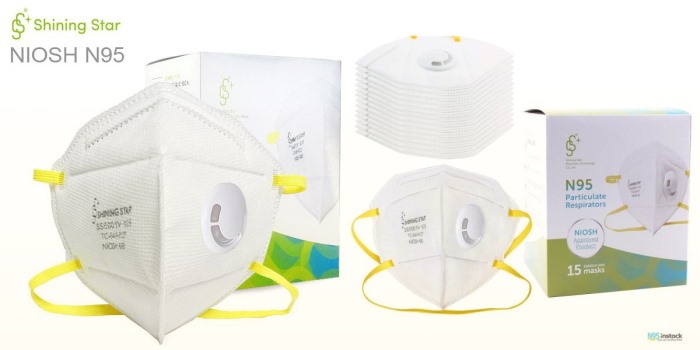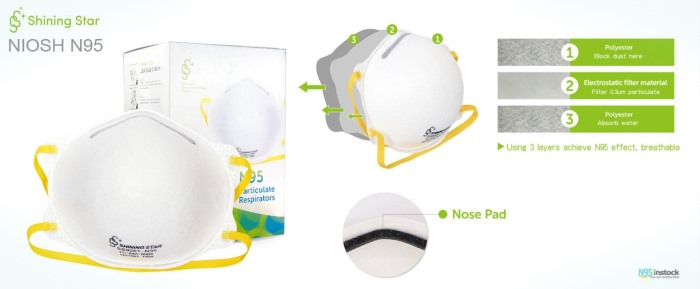Considering any potential N95 mask, check out NIOSHs webpage on Respirators counterfeited/misrepresented. Since you are likely not going to be carrying around an entire respiratory products test laboratory with you when shopping, you will need to instead rely on signs to tell you whether a supposedly N95 face mask has, or has not, received approval from NIOSH. When shopping for N95 face masks, you can look up the CDCs NIOSH-approved list of N95 face masks to make sure that the mask you are looking at has been tested and meets NIOSH regulations. You still will want to check to see that your N95 mask is industrial-grade, is listed as NIOSH-approved, and provides a good, snug fit around your face.
While all NIOSH-rated N95 respirators offer at least 95% filtration for airborne particles, N95 masks come in different types. When worn correctly (with an N95 mask that forms a tight seal around the users face), it may provide protection from dangerous airborne particles. While a flat-folding N95 design might resemble a standard surgical mask, the mask is in fact an NIOSH-rated surgical N95 respirator. Sometimes called an N95 respirator, the N95 protective mask should not be confused with KN95 masks, which share the same name, but are held to completely different standards.

KN95 masks are designed to offer a protective effect that is closer to the one provided by an N95 respirator, which is regulated by CDCs National Institute for Occupational Safety and Health (NIOSH). In the United States, N95 respirator masks are certified by NIOSH, the National Institute of Occupational Safety and Health, to provide filtration effectiveness. The FDA regulates surgical masks and surgical N95 respirators differently, depending on the intended use.
N95 respirators and surgical masks are examples of PPE used to protect a wearer against particles or fluids contaminating their face. Facemasks may or may not achieve some level of liquid barrier or filtering effectiveness; thus, they are no substitute for N95 respirators or other filtering facepiece respirators (FFRs), which offer respiration protection to the wearer, or surgical masks, which offer liquid barrier protection to the wearer. These masks are rated by NIOSH as an N95 surgical respirator, and are evaluated for effectiveness in controlling tuberculosis by the Centers for Disease Control.
Free N95 masks are available in pharmacies, supermarket drugstore chains, and community health centers across the country. Because of the pandemic, FDA has created a list of emergency use authorizations that allows for use of certified masks with respirators from other countries in healthcare settings where NIOSH-approved N95 respirators are not available.

In its consumer guidance on face masks, CDC notes that N95s and other NIOSH-approved respirators are the most protective options. The CDCs study builds upon mask guidance that the CDC released earlier this year, detailing the varying levels of protection offered by the various types of masks–N95s are high on that list. Medical experts are encouraging the public to choose a respirator for face coverage as their top option for now during the pandemic, they told us in our KN95 Mask Guide.



The N95 mask adjusts to United States requirements (National Institute of Occupational Safety and also Health), the various other is made to Australian/New Zealand requirements. For all useful purposes, they perform the exact same although the NIOSH standard is a little tighter than the AS/NZS requirement (purification of 95% of particulates 0.3 microns broad vs. 94% of particulates 0.5 microns broad).
As a scientist always using N95 but had no clue about its mechanics, thanks a lot for preparing the details and explaining it explicitly!